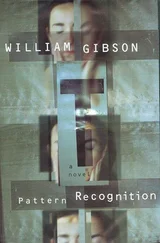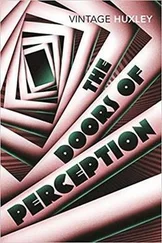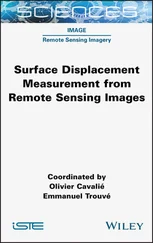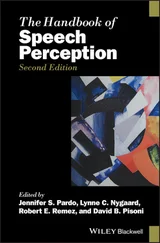Visual information is predominant in everyday human life. The use of recognition systems in the different fields of modern civilization subsistence is becoming the order of the day. These systems both ensure social security and make the living environment of the community more comfortable. They became available for each of us, so we no longer look surprised by the faces recognition capability ensured by our smartphones.
The first chapter analyses the issues relating to imagery recognition and conducts a survey of modern tendencies. The peculiarities of images processing and perception are discussed, and the conditional neural processes in brain and psychological manifestations are described.
The issues of compositional analysis carried out in the course of processing and recognition of different purpose images are envisaged in the second chapter. The stages of image composition analysis and detection of differential characteristics on the basis of current methods are represented.
The third chapter is dedicated to the study of perception mechanism and creation of image solution in the course of designer project activities. The color, form and composition as elements of the artistic work are sign-symbolic means of the image-bearing expression.
The fourth chapter deals with issues of associated perception of conceptual space structures. The associative simulation of environmental objects and structures is considered with due regard to perception psychology.
The informative presentation allocation technology necessary for the basic recognition task is studied in the fifth chapter. The face recognition method that is stable regardless of lighting, make-up and masking is represented.
The sixth chapter is dedicated to the development of methodology and software implementation of algorithms for the intellectualized processing of Internet meme flows and detection of their social and political influence in the social network.
The new imagery perception and recognition methods as well as algorithms based on the mathematical approach to the granulating of satellite data are pointed out in the seventh chapter. The algorithms for the large classes of data with the spectral portraits of different signals are introduced.
The methods of reverse radio detection and ranging carried out with the synthesized aperture are described in the eighth chapter. The process of signal generation after the complex reflection from the object is analytically described.
The new method to increase the resolution of multispectral images due to the use of basic spectra is offered in the ninth chapter. The radiometric signals are redistributed in the image subpixels to improve the general physical resolution of the image.
The tenth chapter deals with the theoretical and technological aspects of aerospace imagery processing and interpretation. The peculiarities of aerospace images, methods of their digital representation and interpretation of these images by means of current artificial neural networks are described.
The partition of visual information into the constituent parts by means of the artistic-compositional analysis may be used by the computer vision as well as in the course of analysis and recognition of artistic works. The combination of artistic peculiarities with modern recognition technologies may be also implemented for the test systems designed for the diagnostics of human well-being.
The book may be useful for students, engineers and researchers working in the field of imagery processing, recognition and perception.
Editor
Prof. Iftikhar B. Abbasov
1
Perception of Images. Modern Trends
Iftikhar B. Abbasov
Southern Federal University, Academy of Engineering and Technology, Department of Engineering Graphics and Computer Design, Taganrog, Russia
Abstract
This chapter outlines the survey of some current lines of research in the field of visual information perception. The peculiarities of the eye anatomy of vertebrates, the structural elements of the visual system, the process of the senses and the perceptual organization of visual information by the brain are analyzed. The modes of eye movements, the structure of the eye bulb, current methods and means of eye movement recording are described. The questions concerning the perception of contour, light contrast and types of color sensing disorders are represented. The concepts of figure and ground are defined, and the factors of gestalt grouping, subjective contours and images recognition in space are analyzed. The peculiarities of monocular and binocular vision are pointed out. The process of perceptual organization, constancy factors, types of visual illusions and causes of their occurrence are described.
Keywords: Visual system, sense, perception, types of eye movements, color sensing disorder, factors of gestalt grouping, monocular and binocular vision, visual illusions
1.1 Visual System
1.1.1 Some Modern Research
Let’s specify some works with a focus on the questions relating to visual perception. The work of [Pepperell, 2019] deals with the conceptual problems of visual perception with respect to the field of art. The author is a painter, and some of his pictures in the context of which the phenomenon of perception of works of pictorial art ( Figure 1.1.1) is envisaged are represented in the work. In the opinion of the author the science is based on rational descriptions, and the art uses artful, aesthetic and philosophical concepts. The statement of German von Helmholtz about the perception of the external environment is mentioned. The qualities of our senses are projected on the objects in the external environment. They seem to be colorful, red or green, cold or warm, with smell or taste. Even understanding that these concepts are subjective and belong to the properties of our nervous system, the art can help us understand the complicated perception problems.
In the opinion of the author the perception of the real world and perception of images of the real world represent the extremely knotty problem associated with the rationality notion. The study of these problems may help us achieve progress in understanding perception in the context of art and current scientific and intellectual breakthroughs.
The results of a study of neuroelectrical brain activity in the course of perception of a particular set of images are presented in the work of [Maglione et al., 2017]. The original (Original set) and stylized pictures by Titian and a contemporary painter were shown to the selected group of people who passed the art studies. The stylized pictures were got from the original ones by means of leaving the color patches (Color set) and contour forms (Style set) ( Figure 1.1.2). The picture and its processed images of L.D. Kampan, the modern painter, are represented in the first row, and the picture by Tiziano Vecellio and the relevant processed analogs in the second row. The research subjects were randomly affected by the offered irritators.
In the course of experimentation it has been found that the Original set induced more emotions than other sets of pictures during the first 10 seconds. The emotions brought out by Color and Style sets were intensified in 30 seconds. However, the emotions held steady for the first Original set. The evidences of cortical activity stream from the parietal and central regions to prefrontal and frontal regions in the course of viewing of images of all data sets were detected throughout the whole experiment. This result is congruent with the idea that active perception of images with the sustained cognitive attention in the parietal and central regions leads to the forming of judgments about their aesthetic valuation in the frontal region of head.
Читать дальше












